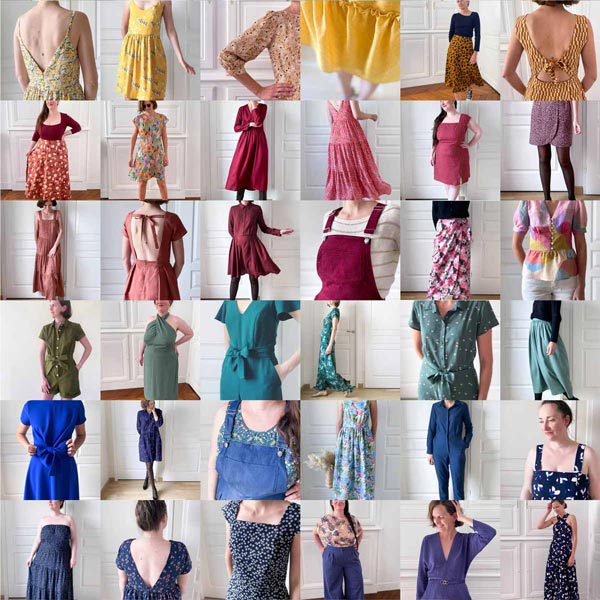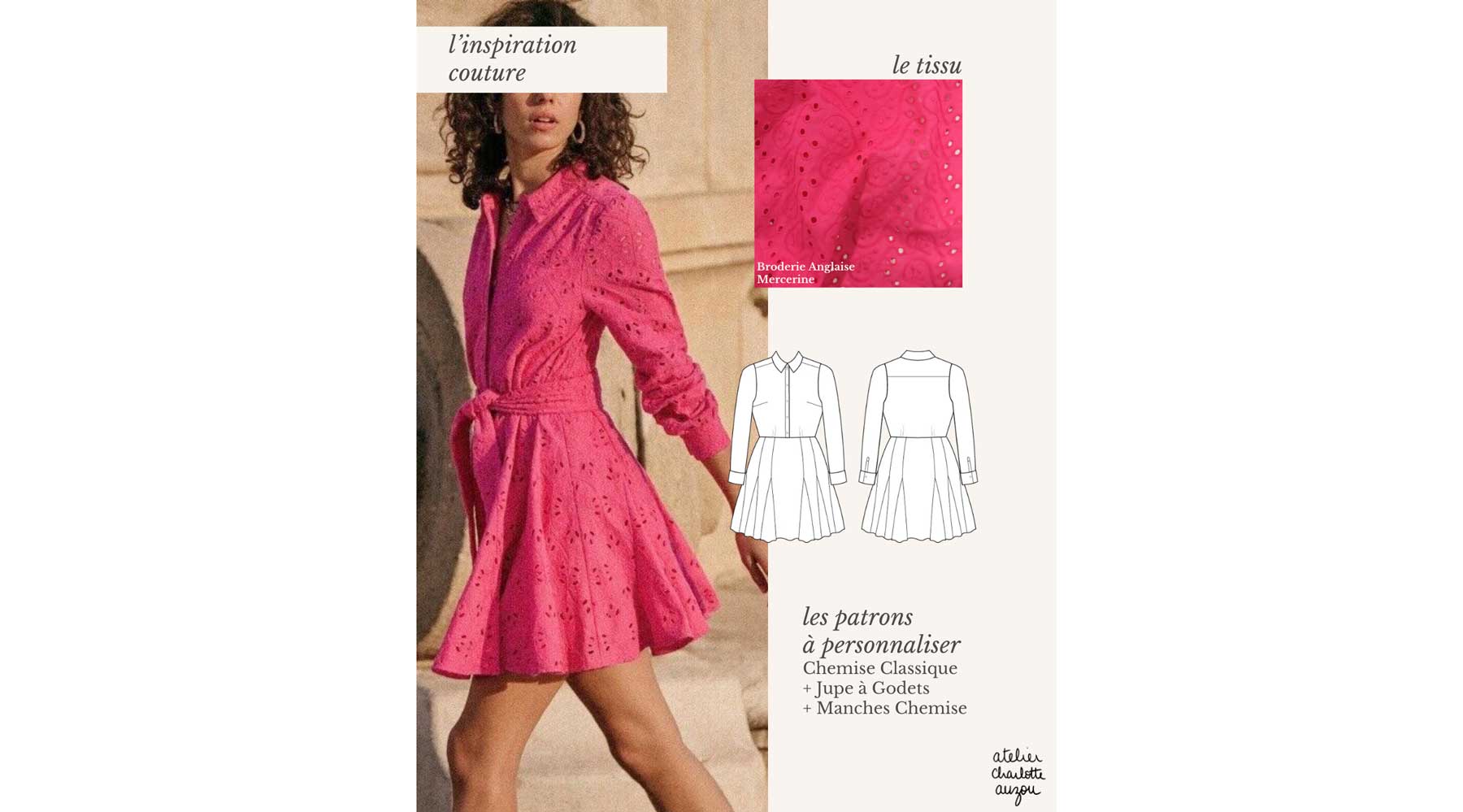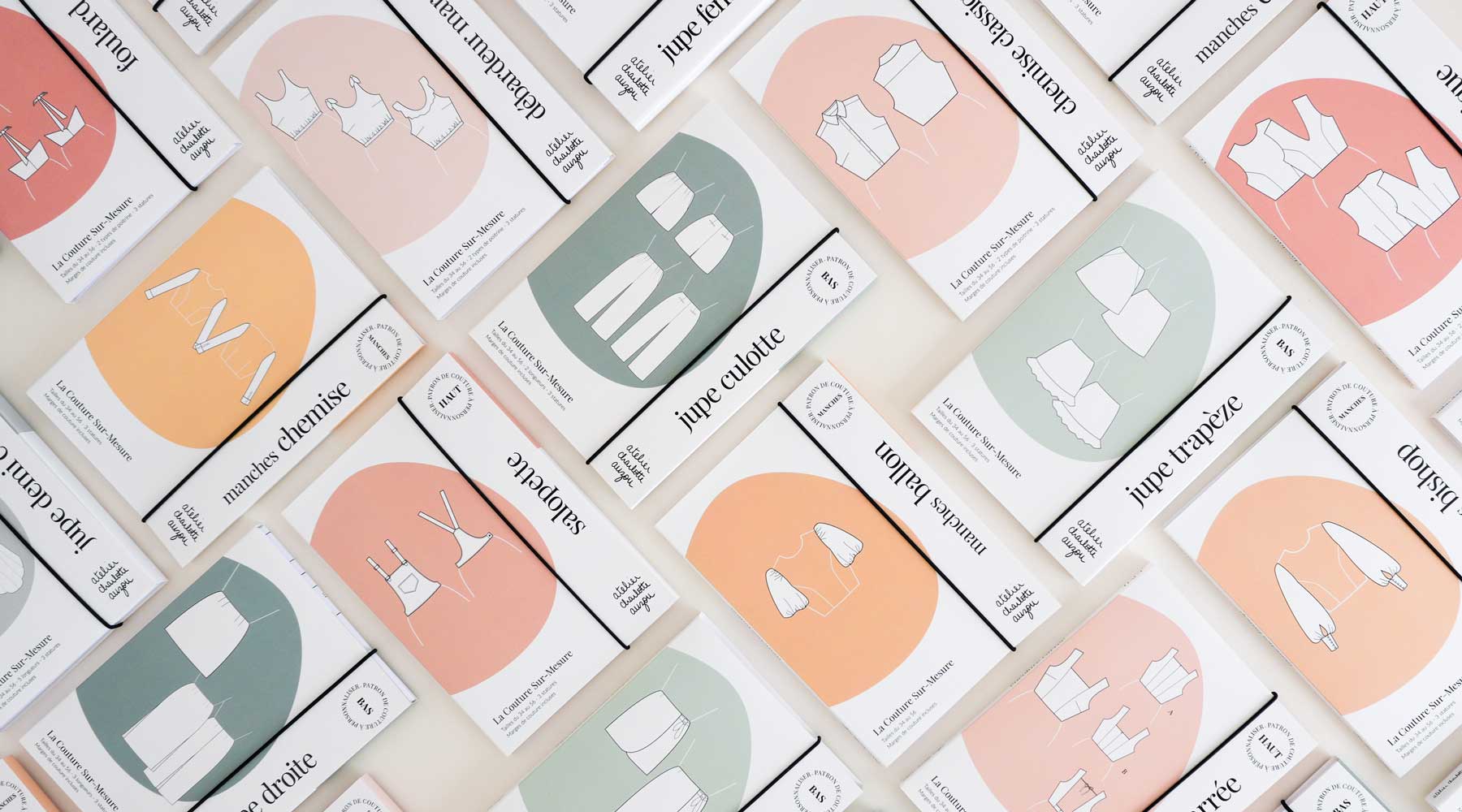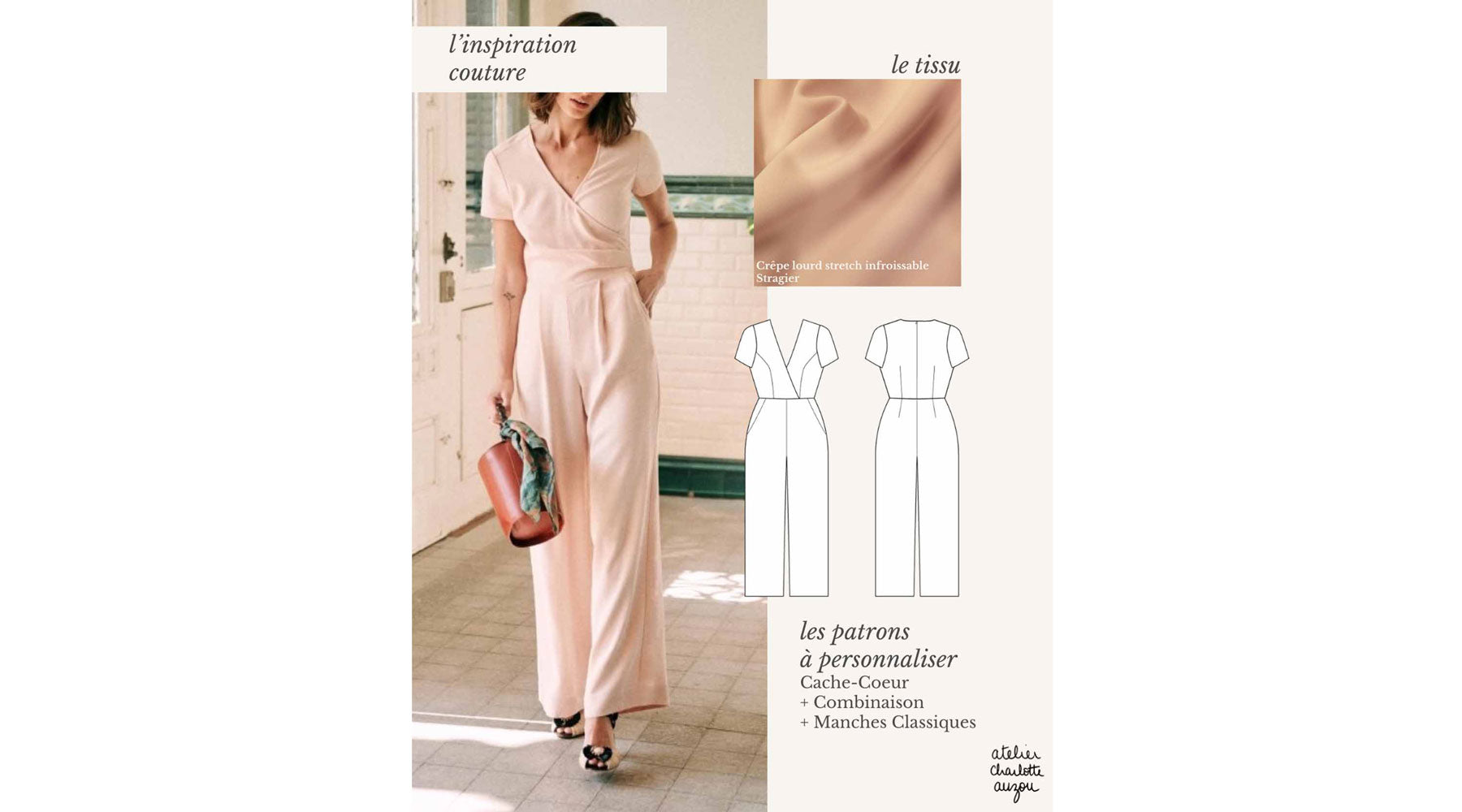10 steps to sewing your wedding dress

Sewing your wedding dress is the holy grail for a seamstress. This project is much more accessible than it seems. With the right tools and a little patience and determination, you can succeed in creating the dress of your dreams.
Five years of creating wedding and bridesmaid dresses allowed me to develop the concept of personalized dresses . Today, these are sewing patterns that allow you to imagine the dress you want by mixing the tops, bottoms and sleeves of the collection.
These patterns are completed by an e-book entirely dedicated to the wedding dress . It will allow you to learn to master the materials and techniques specific to exceptional dresses. Thus, any sewing pattern can become a wedding dress by adapting only the fabrics and finishes.
It's a long-term project, which is extremely rewarding! I'll detail the 10 steps to successfully complete your wedding dress sewing project.
♡
Step 1: Search for inspiration
Browse the wedding dress collections and determine the style of dress that suits you. Do you want a high-waisted or low-waisted dress? A long or short dress? A minimalist dress without lace? A dress with classic or modern lace? A flowing or voluminous dress?
Write down your desires in a notebook or on a Pinterest board.
Follow our inspirations on Pinterest
Step 2: Get familiar with the materials
Wedding dresses are usually made of materials that we are not used to sewing. What is a Moroccan crepe, a taffeta, a supreme silk crepe or a silk dupion? To familiarize yourself with these fabrics, go and discover the materials in store or order samples.
A sample may not be enough to appreciate the drape of the fabric. Once you have made your pre-selection based on the samples, buy 50 cm coupons that will allow you to better appreciate the material. This may seem like an unnecessary expense but it is an investment for the future :) These coupons can be used to make study pieces to practice before sewing the final dress.


Step 3: fittings
There can be a big gap between inspirations and falling in love with a dress. Make an appointment with a wedding dress designer or a multi-brand boutique to test your inspirations and check that they perfectly match your desires and your body shape. Having ordered fabric samples beforehand will also allow you to recognize the materials and better understand the drape of each one.
Step 4: choosing the final model and pattern
Making choices and therefore giving up! Stop at the model you want to make and search for or create the pattern that will allow you to make it.
• You can search for existing patterns that will allow you to realize your desires. Do not limit your searches to wedding dress patterns. The e-book allows you to learn how to adapt any dress pattern to become a wedding dress.
• Think about the practicality of the model you choose. Will you be able to put it on easily? A center back closure provides an easy way to put it on so you can do your hair and makeup before putting on your dress without risking staining it. Also, don't forget comfort so you can fully enjoy your wedding day.
• Be realistic about your sewing level and the time you have to sew for your wedding dress, but remain ambitious because it is a great challenge that is within your reach.
• Are you prone to weight fluctuations? Choose a model whose construction will allow for easy alterations until the end of your project. For example, a model with a center back closure will allow you to easily adjust the side seams without having to unpick the zipper. Larger seam allowances can also help you in this regard.
Personalize your unique dress with the customizable patterns #MaRobeAtelierCharlotteAuzou

Step 5: the canvas(es)
Your dress is taking shape! The toile stage will allow you to make pattern adjustments for a custom fit. You will also be able to think about the assembly steps and the finishing touches of your final dress.
Step 6: Buy the fabrics
Using the toile step, determine the fabric yardage and supplies needed to make the final dress. We recommend ordering slightly larger quantities to allow for potential errors and to make study pieces.
Step 7: Sew study pieces
A study piece is an assembly that allows you to practice and test techniques and settings on the final fabric. For example: choosing your interfacing, choosing the hemming technique, choosing the settings of your machine for sewing lace, practicing the application of the lichette…

Step 8: The Cut
This is a crucial step because a bad cut can alter the final fall of the dress. Dedicate a specific time to cutting your materials.
Step 9: assembly
Be patient and take your time. If you have prepared your project well using the previous steps, it will go smoothly!
Step 10: Final Touch-Ups
They must be done in the month before the wedding to ensure a perfect fit on the big day. This is also the time to hem your dress while wearing your shoes.
♡






7 comments
@CLAIRE : Toutes mes félicitations à votre amie :-) Pour coudre une robe adaptée à la grossesse, il va être important de remonter la ligne de taille et d’ajouter de l’aisance en adaptant les lignes de côté du patron. La robe sera alors de style empire. Quant à la jupe, des petites fronces sur le devant peuvent apporter du volume pour y placer le ventre. Je vous conseille aussi d’égaliser l’ourlet au dernier moment pour bien prendre en compte car la silhouette change vite quand on est enceinte :-) Bonne couture !
CHARLOTTE
Bonjour Charlotte,
J’ai été missionnée pour la création de la robe d’une amie. Problème, la mariée serait déjà bien enceinte à la date du mariage. Comment procéder pour les mesures et adaptations, sachant qu’elle désire une robe fluide, très simple, marquée au dessous de la poitrine ?
Merci d’avance pour votre réponse, et pour votre e-book qui m’accompagnera dans ce challenge!
Claire
@FLORENCE : Merci pour votre message. J’ai pour habitude de coudre la doublure de mes robes de mariée sans traîne. Bonne couture !
CHARLOTTE
Je suis en pleine reflexion pour le haut de ma future robe, pour le bas je suis décidée je voudrais une traîne, mais comment la doubler ? Doubler juste la jupe se au dessus des chevilles ou la doubler entièrement avec un même tissu, sur tout l arrondi du bas de la traîne faut il coudre les 2 tissus ensemble ? J ai acheté plusieurs de vos livres et je vous remercie pour vos idées, conseils, style
Florence
Bonjour Charlotte, voilà, j’ai reçu mon tissu pour ma robe de mariée, et ma dentelle pour les manches. Je m’apprêtais à les découper mais grande question !! Je veux conserver bien entendu le feston pour le bas de mes manches 3/4 mais dans ce cas là comment j’aligne mon patron ? car j’utilise le droit fil du patron parrallèle au bord coupé, mon feston n’est pas droit ? et si j’aligne mon bas de manche au feston , je ne respecte plus le droit fil. Merci beaucoup pour votre réponse :-)
elleaume
@FLO : merci beaucoup et bravo de vous lancer dans ce projet génial ! Quelques conseils pour une plus jolie couture :
• Choisissez du fil de qualité, tester un autre fil sur des chutes, ce sera peut-être plus joli ?
• Effectivement, travaillez vos réglages de machine
• Repassez ! Souvent les coutures deviennent plus belles une fois pressées au fer :-)
Bonne continuation et tous mes voeux de bonheur
CHARLOTTE
Bon ! Je me lance ! J’ai commencé à courdre ma robe pour le grand jour !
J’ai choisi le haut dos nu V et encolure en V et la jupe longue ajustée avec traine.
J’ai utilisé un crêpe lourd pour la robe entière et j’ai doublé le haut avec une dentelle.
J’ai fait une toile bien sur mais en cousant les 2 dos de la jupe ensemble cela fait une couture très voyante…!
Ma tension de fil n’est pas la bonne ? Le point n’est pas le bon ? Je suis un peu perdue…
Merci d’avance pour vos précieux conseils !!
Et merci d’avoir créé un Ebook si détaillé pour toute celle qui voudrait se lancer dans ce projet un peu fou !
Flo
Flo
Leave a comment
This site is protected by hCaptcha and the hCaptcha Privacy Policy and Terms of Service apply.